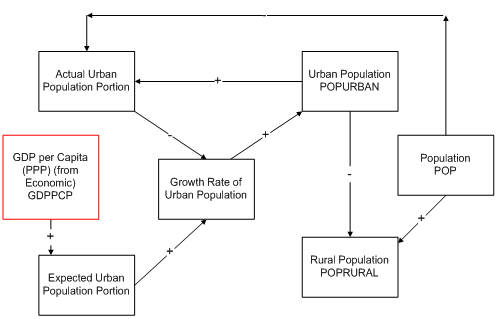International Futures Help System
Urbanization
IFs does not represent urban and rural populations by age and sex, but does forecast the division in total. The key driving variable in early model years, internal to the model, is the growth rate of the urban population. Because that variable is initialized with historical data, it initially introduces an inertial element into the forecast. But over time the rate of growth in urban population increases or decreases more and more in response to the gap between the actual portion of population that is urban and an expected urbanization rate based on a function driven by GDP per capita at purchasing power parity (GDPPCP). The growth rate also responds, however, to approaching very high levels of urban population (POPURBAN) as a percentage of the total by slowing down. Because the model dynamics are built around urban population, rural population (POPRURAL) is essentially a residual.

There is no parametric control over the growth of urban population in part because the model does not contain any significant forward linkages of urban population size or portion.
 International Futures at the Pardee Center
International Futures at the Pardee Center